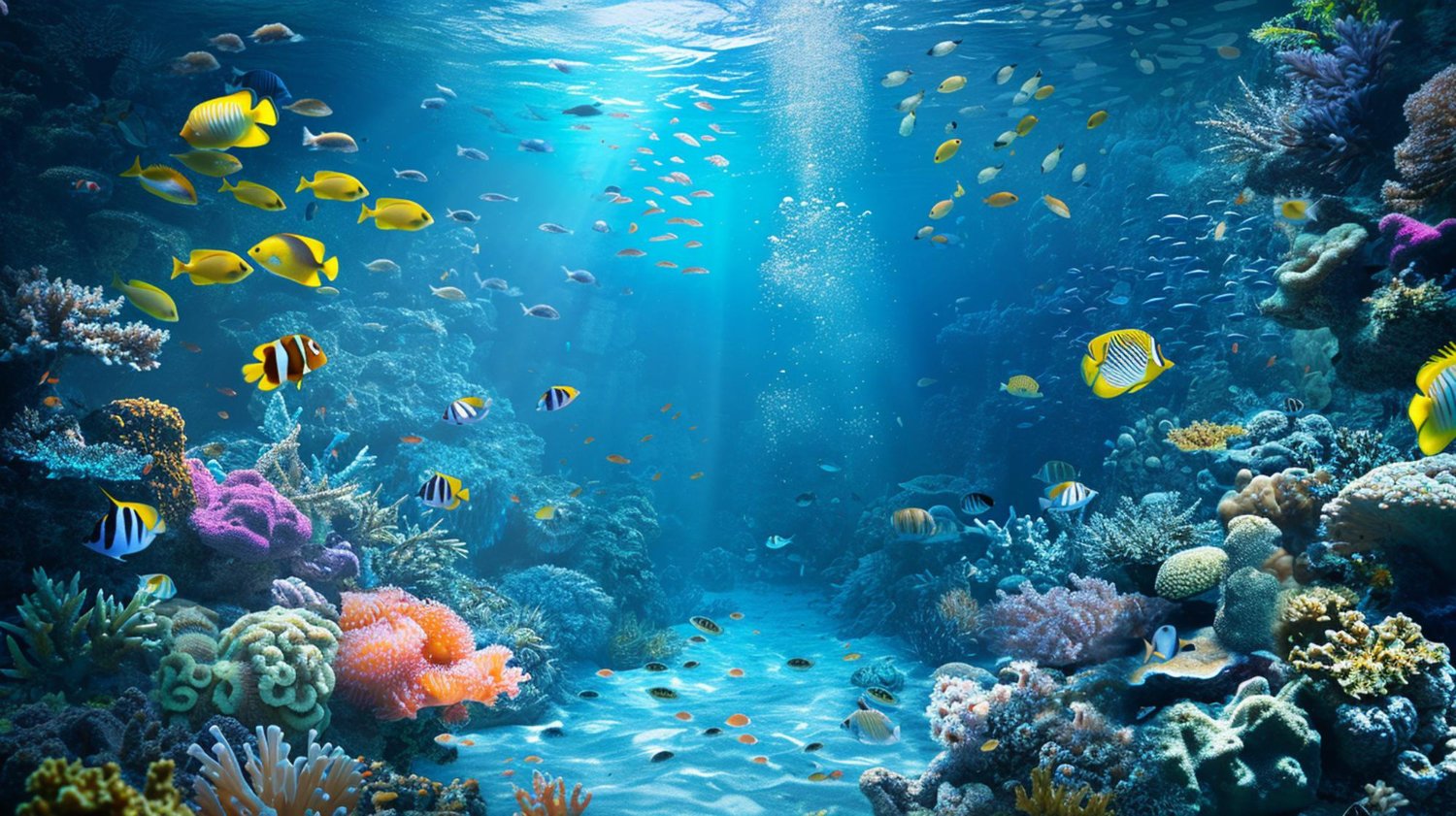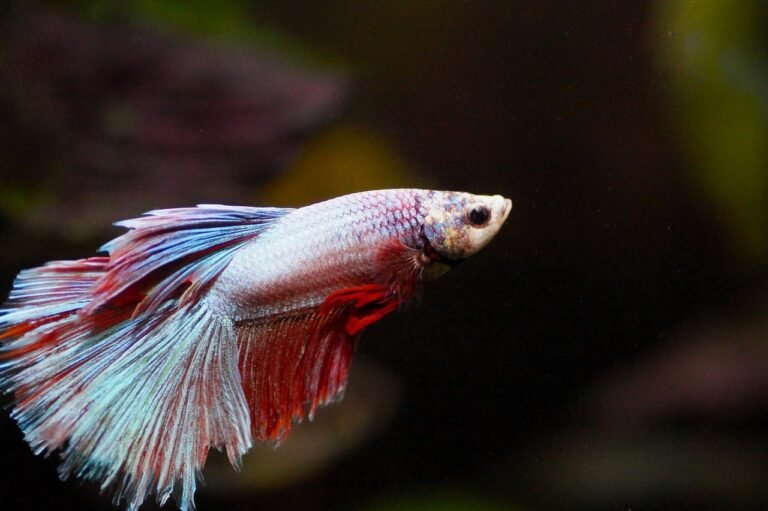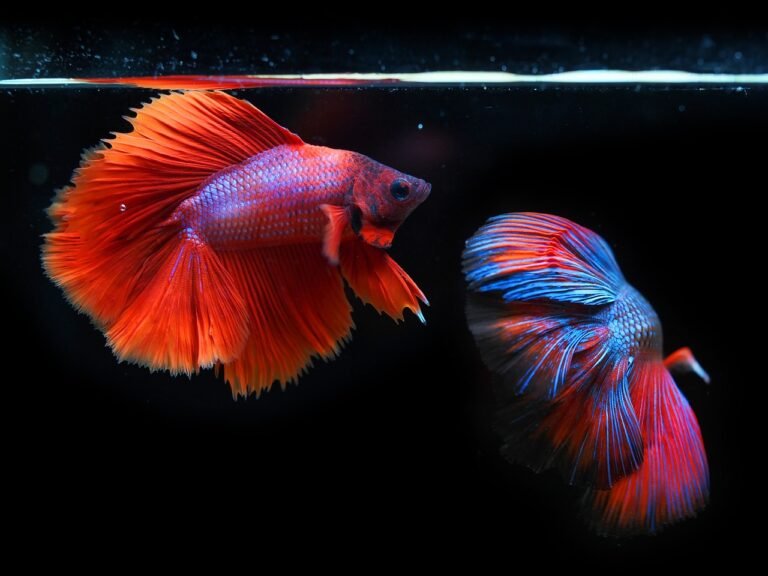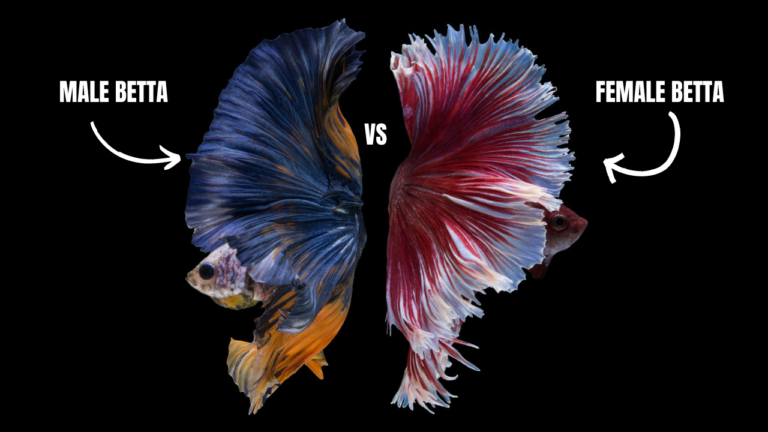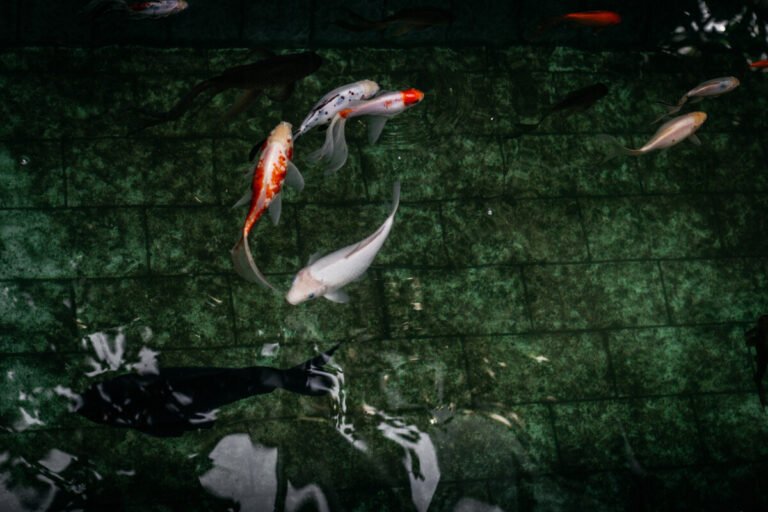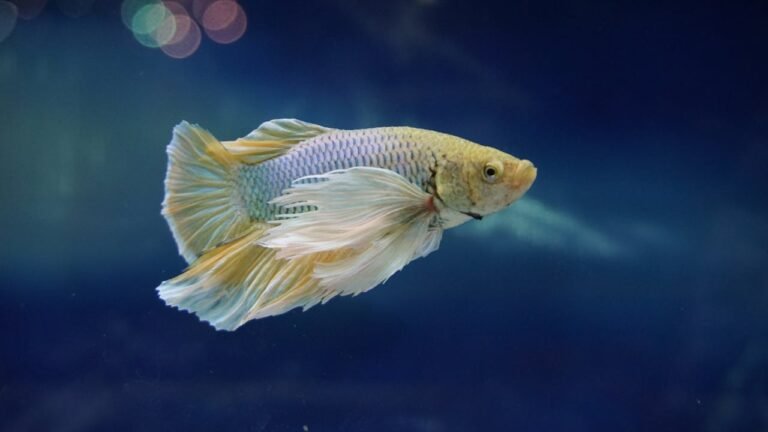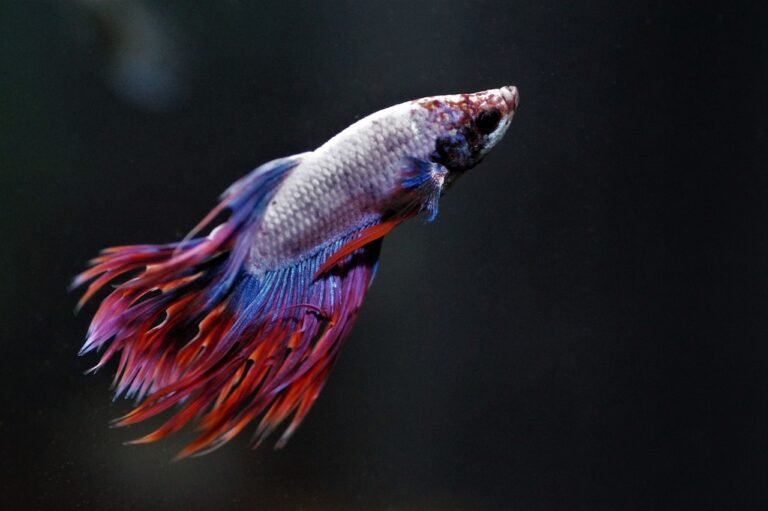One of the most rewarding things about being a pet owner is when you place a live plant in your Betta’s tank. Not only do these water gardens bring natural beauty into our homes, but they also have numerous pros for our little guys. Incorporating vegetation into the betta’s surrounding means that we are creating a green paradise like its habitat.
This makes plants vital in balancing the ecosystem of the tank. They help oxygenate water, take in harmful substances like ammonia and nitrites and give fish hiding places to rest or explore. Additionally; it has been proved that their presence reduces stress levels among fish hence making them happy.
Furthermore, living objects contribute to the aesthetic appeal of our bettas’ tanks. The underwater sceneries become more fascinating due to their vivacious colors and textures than ever seen before.
Advantages of a betta fish planted tank
Incorporating live plants into your betta fish tank offers much more than just beauty enhancement. Below are some benefits that can be counted upon:
- Better Water Quality: By absorbing toxins such as ammonia nitrites from the water column, plants act as natural filters thus keeping healthier conditions for bettas while reducing chances of getting sick due to poor quality water.
- Increased Oxygen Level: Oxygen supply needed for life is made available by plants through photosynthesis process thus releasing it out into their surrounding area.
- Hence Less Stress: This brings them closer to nature resulting in better overall health condition.
- Finally Hiding Places: There should be enough space provided by various types of flora where they can hide, rest or even sleep since this mimics what happens under normal circumstances when living wild habitats are available.
- Aesthetics: Most people who keep bettas as pets love them because they look nice and colorful; therefore putting some live plants would make the tank more beautiful than it was, so the many beautiful colors of bettas and having greenery around will intensify this characteristic further.
By adding live plants into your Betta fish tank you are making a visual masterpiece and also providing a healthier and more engaging environment for your much loved pet.
Choosing the right plants
While choosing plants for your betta fish tank, ensure that they are not only attractive but also that they suit the needs of your Betta. Consider the following factors:
- Plant Size: Take into account plants which can fit within the confines of your tank without overcrowding it. Dwarf or compact varieties may be suitable for smaller tanks, while larger ones can accommodate bigger plants.
- Growth Rate: Always consider how fast your selected plant can grow. Slow growing types may require less care; however, fast growing ones need regular pruning to control their growth rate.
- Light Requirements: Various plants have different requirements concerning light. Make sure that the selected species matches up with conditions in your tank.
- Nutrient Needs: Some varieties might need additives or nutritional supplements so as they thrive while others survive on nutrients in water available in the tank alone.
- Betta-Friendly: Steer clear of plants with sharp or rough edges that can potentially hurt your betta’s delicate fins. Choose those with soft, smooth leaves instead.
Java fern, anubias, dwarf sagittaria, cryptocoryne, and moss balls are popular choices among betta owners. These plants not only add aesthetic value but also provide hideouts and oxygen for your betta fish.
Setting up a betta fish tank with live plants
Once you’ve chosen the right plants for your aquarium, create a water paradise for your fish. Follow this step-by-step procedure to start because these are chosen from the best betta fish tank indeas around :
- Prepare the Substrate: Use quality aquaria substrates that will furnish nutrients needed by your plants to grow well. Eco-complete and other aqua soils are ideal due to their high nutrient content.
- Plant Placement: Arrange plants within the tank such that there is enough space between them for proper growth and root spread. You might want to vary heights and textures too.
- Add Decorations & Hiding Spots: You can introduce driftwood or rocks as natural decorations which could possibly lead to additional hiding spots thus focal points in the tank.
- Lighting: Install lighting that suits the kind of plant you have selected from many options. For optimum growth most aquatic plants need moderate-high light conditions.
- Acclimate Plants: Ensure that these plants slowly adjust to new water conditions before introducing them into your tank so as not to shock them suddenly.
- Introduce Your Betta: After cycling; introduce betta fish into their newly created lush oasis through putting different kinds of vegetation in their living space (i.e., an aquarium).
Remember that patience is key when it comes to setting up a planted tank. This might take some time before the plant fully establishes itself and the ecosystem reaches a balanced state.
Maintaining a healthy environment
To keep both bettas and their accompanying flora flourishing necessitates regular attention plus care in a tank. These guidelines will help in ensuring that your water oasis is always green:
- Water Changes: Regular partial water changes are very important because they take out accumulated wastes and renew fundamental elements to the plants. For this reason, a 25-30% change after every week or two would suffice.
- Fertilization: If you have chosen different types of plant species; using liquid fertilizers or root tabs might be essential to keep providing them with enough nutrients for optimal growth.
- Pruning & Trimming: Occasionally get rid of dead/dying leaves; this helps eliminate them altogether allowing healthier ones to grow faster while at the same time preventing overgrowth thus keeping everything neat at all times.
- Algae Control: In planted tank systems, excess algae can turn into a problem. Hence it is important to maintain the right lighting levels, nutrient balance as well as water flow which discourage its rapid growth rate.
- Monitor Water Parameters: Frequent checking together with monitoring of such parameters like pH, ammonia, nitrites and nitrates amongst others is necessary – This ensures that the tank remains safe for both fish and plants within your house.
Following these maintenance guidelines will create a thriving ecosystem within your betta fish tank, sustaining the health and happiness of both your finned friend and their lush plant companions.
Tips for your betta fish tank
Creating a truly lush and vibrant oasis for your betta fish can be done through creative thinking and attention to detail. Below are some tips that you may find useful in creating a stunning planted betta fish tank setup for your little buddy :
- Variety: Mix together different types of plants featuring varied textures and colors to have an amazing underwater environment full of life that captures everyone’s attention at first look.
- Consider Plant Positioning: Towards the back, place taller plants while shorter ones are placed near the front to add depth and dimension.
- Add Hardscape Elements: Driftwood, rocks or aquarium-safe ornaments can be used as natural elements in order to create visually engaging features as well as focal points for these tanks.
- Use Aquascaping Techniques: To achieve a more balanced layout, try using other popular aquascaping techniques such as Dutch style or nature aquariums.
- Play with Lighting: Change intensities and spectrums of light which will contribute towards bringing out vibrant colors and textures on your plants.
- Let them Grow Wild: Both sides being covered with most of the tank gives it a luxuriant green look by allowing plants to grow freely.
Remember however creating a beautiful planted tank is an art form requiring patience, dedication, and keen attention to details. Only then would you understand how fascinating it is watching one’s Betta fish living happily in this underwater paradise surrounded by lush green vegetation.
Enhancing the beauty of your betta fish tank
Although live plants take center stage in any planted betta fish tank there are several other items which can improve its beauty as well as functionality. Here are some suggestions:
- Aquarium Backgrounds: Good choices include 3D backgrounds or printed backgrounds which resemble natural underwater scenes so that the lush plant life becomes more prominent.
- LED Lighting: High-quality LED lighting systems will provide not only the required light intensity for your plants but also show their vibrant colors and textures.
- Aquarium Ornaments: Placing strategically aquarium ornaments like sunken ships, caves or statues can add visual interest to your planted tank thereby creating focal points.
- CO2 Systems: In complex planted tanks consider a CO2 system that helps in increasing plant growth hence a rich environment is formed.
- Aquarium Glassware: Get clear glasses such as rimless or low-iron glass tanks that make your planted tank visible enough.
- Plant Accessories: Other useful items you need to have include tweezers, scissors, and nutrient supplements for easy maintenance and grooming of your aqua garden.
Thus, using accessories like these in a planted betta fish tank will not only improve its aesthetics but also create an environment which is more functional and conducive to the growth of plants as well as the fish.
Creating a natural habitat
Presence of live plants in your betta fish tank can be beneficial in many ways, one being the ability to create a natural and enhancing environment that imitates their native area. While fish may feel safer and more secure when they see such vegetation, it also helps them to thrive.
Here are some tips for creating a natural habitat for your betta fish with a planted tank:
- Include Hiding Places: In nature, wild betta fishes frequently take cover among dense vegetation or underwater structures. Therefore, strategically placing plants, driftwood for aquarium-safe decoration will provide ample hiding spots throughout the tank.
- Maintain Appropriate Water Parameters: Betta fish have optimum temperatures around 78-82°F (25-28°C) while the pH ranges from 6.5pH-7.5pH; in order to mimic their natural conditions maintain these parameters.
- Provide Gentle Water Flow: Bettas grow in areas characterized by smooth water currents hence avoid making them confused with turbulence using low-flow filter or air stone.
- Choose Suitable Tankmates: Although bettas tend to be solitary pets, small tetras, corydoras, catfish or snails are potential compatible tank mates if you want to create more organic communities’ tanks at home.
- Offer a Varied Diet: The range of foodstuffs that the Siamese fighting fish eat in the wild includes insects as well as small crustaceans. Thereby give them good quality pellets or freeze-dried foods alongside live/frozen treats occasionally too which makes the diet complete.
Creating such an environment with a live planted betta fish tank ensures that not only do you offer security for your finned friend but promote their general wellness as well.
Common mistakes to avoid
It can be a rewarding experience to set up a betta fish tank with plants. However, there are some typical mistakes that can mar your success story in setting up such tanks, here are the traps to avoid.
- Overcrowding: This is a common phenomenon where many plant species are fitted into one aquarium. Thereby overcrowding the tank which is bad for its growth and health of plants and also leads to algal bloom.
- Insufficient Lighting: One of the reasons why the plants do not grow normally or get attacked by algae is because of inadequate lighting. Consequently, make sure that you have chosen the right amount of light as well as duration for every type of plant specified.
- Lack of Nutrients: Plants really need some amounts of nutrients on a regular basis so that they can survive. The use of fertilizer or root tabs must not be ignored otherwise it will lead to retarded growth and symptoms related to lack of foodstuffs needed by these organisms.
- Improper Acclimation: Sometimes, people forget this key aspect where they put their plants straight from the shop into water condition without considering acclimatization which may result in shock leading to die-off.
- Incompatible Plants: There are certain kinds of plants that should never be used in betta fish tanks since they have sharp and rough edges that can possibly cause harm on delicate fins.
- Neglecting Water Changes: In order to maintain good quality water conditions needed by your aquatic plants that contain essential elements, partial changes must be made regularly.
- Overfeeding: The result is an accumulation of organic waste material such as uneaten fish food thereby resulting in high concentration levels of nutrients in water making it an ideal place for rapid growth and reproduction processes involving various types of algae leading towards ecological disturbance within the system.
Avoiding these pitfalls will help you succeed and create a lush oasis for your betta fish and their plant companions.
Summing Up
Apart from being pleasurable, adding live plants to your fish tank also has its own advantages that will impact you and your pet friend in various ways. This is because planting tanks act as paradise on earth for these amazing creatures by creating an appealing underwater landscape which provides more food and fun to the occupant.
Thus, as you get into this, ensure you select appropriate varieties of plants and maintain necessary water parameters apart from appreciating how beautiful it looks like when your garden thrives hydroponically. And indeed with time plus energy input, amazed will be an understatement seeing lush greenery teeming around satisfying all visual senses while still nourishing fins too hence promoting general wellbeing of the body.
Experience the blissfulness of transforming one’s environment into a lavish abode by trying different forms of submerged vegetation including our wide range in addition to expertise available here today. Makeover your aquarium into a vibrant underwater heaven now so that you can observe how excitedly healthy they become.

